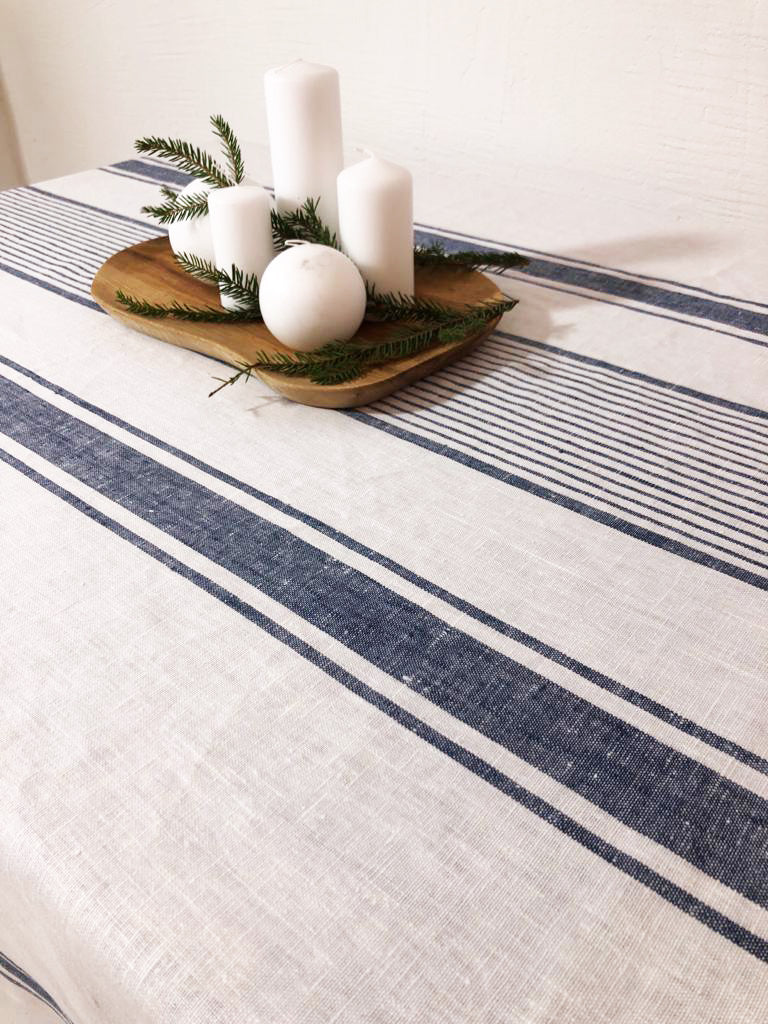Classy Table Cloths: Perfect Choices for each Celebration
Classy Table Cloths: Perfect Choices for each Celebration
Blog Article
Bed Linen Material Developments: Discovering Modern Trends and Creative Applications in Layout and Textile Industry
From lasting manufacturing techniques to advanced weaving technologies, the evolution of bed linen is improving the landscape of the textile market. As we delve right into the worlds of creative style applications and the introduction of linen blends and hybrid fabrics, a brand-new phase unravels in which linen's role in future textile technologies takes center stage.
Lasting Practices in Bed Linen Manufacturing
Lasting practices in linen production have ended up being increasingly crucial in the fabric industry's efforts to decrease environmental impact and promote honest sourcing approaches. Linen, an all-natural fiber stemmed from the flax plant, supplies a variety of advantages such as breathability, biodegradability, and durability. However, typical methods of bed linen production can include significant water consumption, pesticide usage, and energy-intensive procedures.
To attend to these challenges, many fabric manufacturers are adopting lasting methods throughout the bed linen manufacturing process. This includes sourcing flax from organic farms that avoid unsafe pesticides and chemicals, carrying out water-efficient retting strategies to remove fibers from the flax stalks, and utilizing eco-friendly dyes and coatings. In addition, some business are purchasing sustainable power resources to power their manufacturing facilities and decreasing waste via recycling and upcycling efforts.
Technological Improvements in Linen Weaving
With the expanding emphasis on lasting methods in bed linen manufacturing, the textile industry is currently observing a surge in technical advancements particularly focused on reinventing the art of bed linen weaving. These innovations are improving the means linen fabrics are produced, offering raised effectiveness, quality, and creativity in weaving strategies.
Among the key technical improvements in linen weaving is the combination of computerized looms. These sophisticated looms are equipped with software program that enables intricate and intricate designs to be woven with precision. By digitizing the weaving process, makers can attain higher consistency and precision in their bed linen materials.
Moreover, improvements in thread spinning modern technology have enabled the production of finer and more resilient linen threads - table cloths. This results in softer and smoother linen textiles that preserve their top quality also after several usages and laundries
Additionally, the growth of eco-friendly dyeing procedures and coatings for bed linen materials is acquiring traction. These lasting methods not only lower the ecological influence yet likewise satisfy the boosting consumer demand for ethically produced fabrics.
Creative Layout Applications for Bed Linen
Innovative creative strategies are increasingly shaping the creative design applications for bed linen in the fabric sector. Bed linen's all-natural visual allure and capacity to mix with other materials make it a favorite choice for creating unique garments and devices that cater to the ecologically aware customer.
Furthermore, designers are trying out bed linen in home decor, utilizing its breathable and sturdy nature to craft fashionable furnishings such as drapes, bed linens, and upholstery. The texture and drape of linen bring a feeling of sophistication and comfort to indoor areas, including a touch of beauty to modern homes.

Linen Blends and Hybrid Fabrics

Hybrid materials, on the various other hand, take the concept of blending a step even more by integrating additional elements such as metallic threads, recycled materials, or conductive fibers. These cutting-edge Click Here fabrics not only expand the style possibilities yet likewise present useful elements like conductivity, antimicrobial properties, or boosted durability. Hybrid textiles are increasingly being utilized in numerous industries, consisting of style, interior decoration, and technological fabrics, where the demand for multifunctional products gets on the rise.
Linen's Function in Future Textile Innovations

In the realm of future textile developments, linen is anticipated to be a principal in the growth of innovative functional textiles. Developers and scientists are checking out means to boost bed linen's integral qualities with technical improvements, such as integrating smart textiles, nanotechnology, and efficiency surfaces. These innovations aim to raise bed linen's performance qualities, making it suitable for a wider variety of applications, from activewear to safety garments.
Furthermore, the combination of linen with other natural or synthetic fibers opens endless possibilities for producing novel fabrics with distinct properties and functionalities. By leveraging bed linen's qualities and checking out cutting-edge blends, the fabric sector is poised to present amazing developments that provide to evolving consumer requirements and sustainability requirements.
Final Thought
Finally, the exploration of lasting methods, technological improvements, innovative layout applications, bed linen blends, and its role in future fabric developments highlight the continual evolution of linen material in the modern-day design and textile industry. With a concentrate on technology original site and creativity, the convenience and green nature of bed linen make it a beneficial material for developers and makers alike, paving the method for further growths and improvements in the area of fabrics.
As we delve into the worlds of creative style applications and the appearance of linen blends and hybrid materials, a new phase unravels in which bed linen's function in future fabric advancements takes center phase.
Discovering the fusion of linen with various other textiles has led to the appearance of innovative blends and crossbreed textiles in the contemporary textile sector. Bed linen blends supply an one-of-a-kind mix of the features of linen with those of various other fibers, resulting in textiles that possess enhanced buildings such as increased durability, improved draping, and decreased wrinkling.The evolution of linen blends and hybrid fabrics has actually set the phase for Bed linen to play a critical role in driving future fabric technologies.In the world of future textile technologies, bed linen is expected to be a vital gamer in the growth of innovative functional textiles.
Report this page